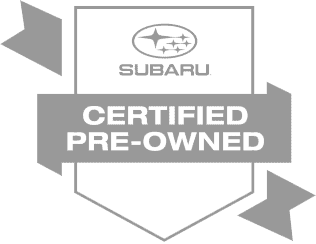Inline engines feature pistons that sit upright and move straight
up and down. This means the engine
block is taller overall and has a higher center of gravity than a
SUBARU BOXER® engine, which features pistons
laid flat. The upright layout of inline engines means they can
vibrate more during operation. Also, these engines are
often placed transversely -- in 90° opposition -- to the central
driveshaft. If you want the control that comes from
all-wheel drive with such a layout, extra components must be
added. These components route power through several 90°
turns before it reaches the wheels. This makes the system more
complicated than what's possible with a SUBARU BOXER®
engine. And it makes symmetry all but impossible.
SUBARU BOXER® Engine

How the SUBARU BOXER® Engine is Different
Inspired by the design of airplane engines, the SUBARU BOXER® engine stands out from the type of engine you'd typically find in a car. Instead of pistons moving straight up and down, or at an angle like most engines, the pistons of the SUBARU BOXER® engine are laid flat and move parallel to the ground. The unique punch, counter-punch action is inherently smoother, and the low, horizontal layout is more balanced and stable. And what's more, its alignment allows us to feed power directly into the Subaru Symmetrical All-Wheel Drive system with maximum efficiency.
SUBARU BOXER® Engine vs. Inline Engine
SUBARU BOXER® Engine vs. V-type Engine
The pistons in a V-type engine move at a more upright angle to
each other. Without the horizontally
opposed motion of the SUBARU BOXER® engine, they are
more prone to side-to-side vibration. Also, the V-type
design inherently has a higher center of gravity than the flat
design of the SUBARU BOXER® engine, and because
it often sits higher in the vehicle, it can elevate the center
of gravity of the entire vehicle. The result is performance
that can be less smooth than a SUBARU BOXER® engine
and handling that isn't as tight and responsive. What's
more, the extra vibration can require extra parts to stabilize
the engine, which add weight and bulk.
SUBARU BOXER® Engine vs. Hybrid or Battery-based System
Hybrid or battery-based drive systems certainly have advantages,
but they are not without trade-offs.
For example, you often sacrifice versatility and capability with
a hybrid or electric vehicle. Towing capacity and
the ability to tackle rough roads are greatly increased with the
SUBARU BOXER® engine. Subaru also invests
tremendous interest in building engines that burn cleanly. The
Forester, Legacy and Outback even received similar EPA
air pollution scores as hybrid vehicles in their class3.
What's more, with the conventional, yet clean approach
Subaru uses, we avoid the environmental risks of manufacturing
batteries, and then disposing of the chemicals later
on.
Why the SUBARU BOXER® Engine is Better
Positioning the pistons flat and turning the engine so it's going the same direction as the central driveshaft has allowed us to achieve some unique driving characteristics. Smoother performance comes from the horizontally opposed pistons. That reduced vibration can help an engine perform more reliably. Balance and stability result from a flat profile and low placement. And its layout has allowed us to build an all-wheel drive system with almost perfect side-to-side symmetry. The result is more confident, more comfortable, and more engaging driving.
Smoother Performance
In the SUBARU BOXER® engine, the pistons are laid flat, and move in 180-degree opposition to each other on a horizontal plane. When one piston moves, the piston opposite it moves in the other direction. That counter motion helps cancel out the vibration that the movement of the pistons cause. This means when you step on the accelerator the revs come on smooth. So the power is there when you need it, without ever compromising your comfort or control.Increased Durability
Subaru vehicles are known for being rough and tumble, and being able to withstand years of tough conditions. We earned that reputation beginning with the way we build our engines. The flat design of the SUBARU BOXER® engine is inherently rigid, and we build each with great attention to strength and toughness. Also, power is produced with less vibration than other designs. An engine that is subjected to less vibration lasts longer. It's no wonder 94% of Subaru vehicles we've built in the last 10 years are still on the road today1.
Greater Agility
With the pistons laid on their sides, the engine block of the SUBARU BOXER® engine is flatter than other designs. Not only does the engine have a lower profile, but we also place it lower in the chassis. It's designed to be perfectly symmetrical side-to-side, for an exceptionally well-balanced package. The engine is generally the heaviest single part of a vehicle, and with such a well-balanced and low-center-of-gravity design, the SUBARU BOXER® engine helps keep the vehicle as a whole more balanced and more stable. This helps make the vehicle react more quickly to changes in direction, and more resistant to side-to-side motion during cornering.



